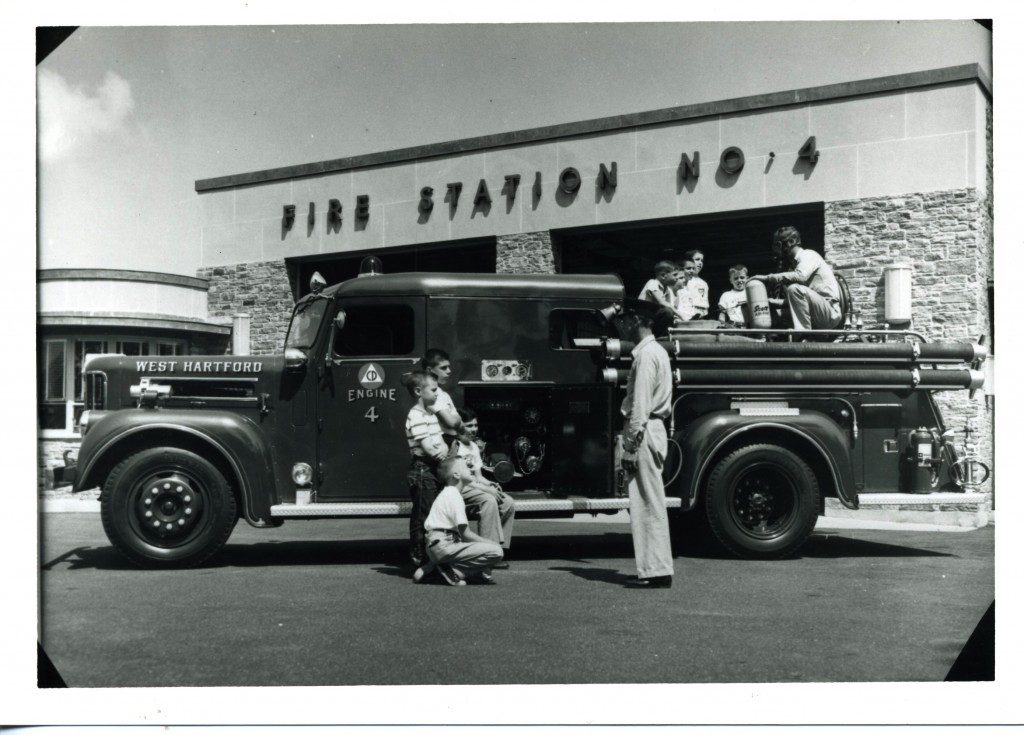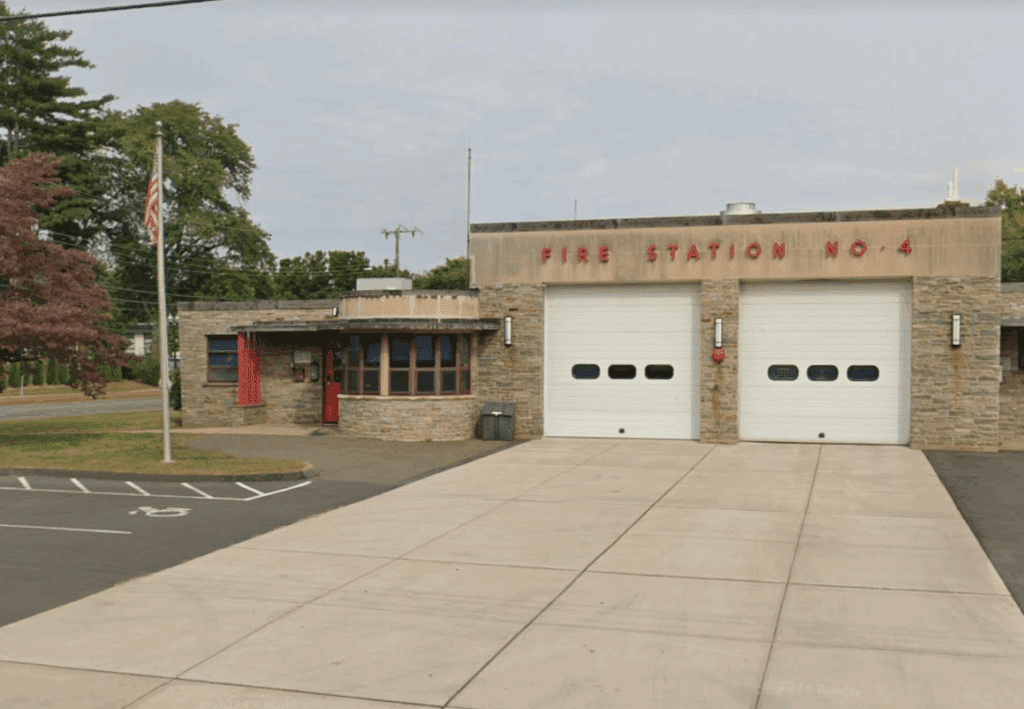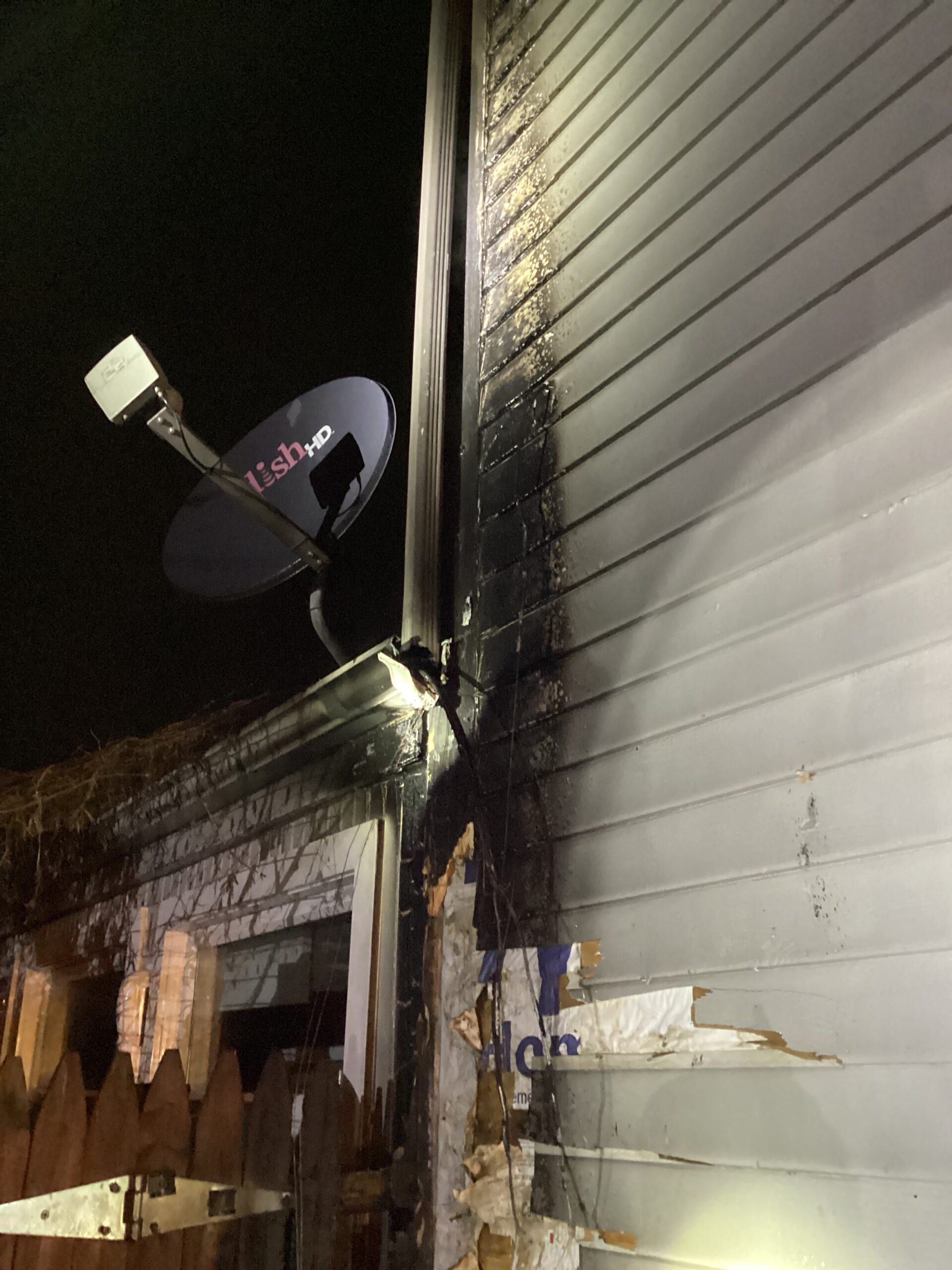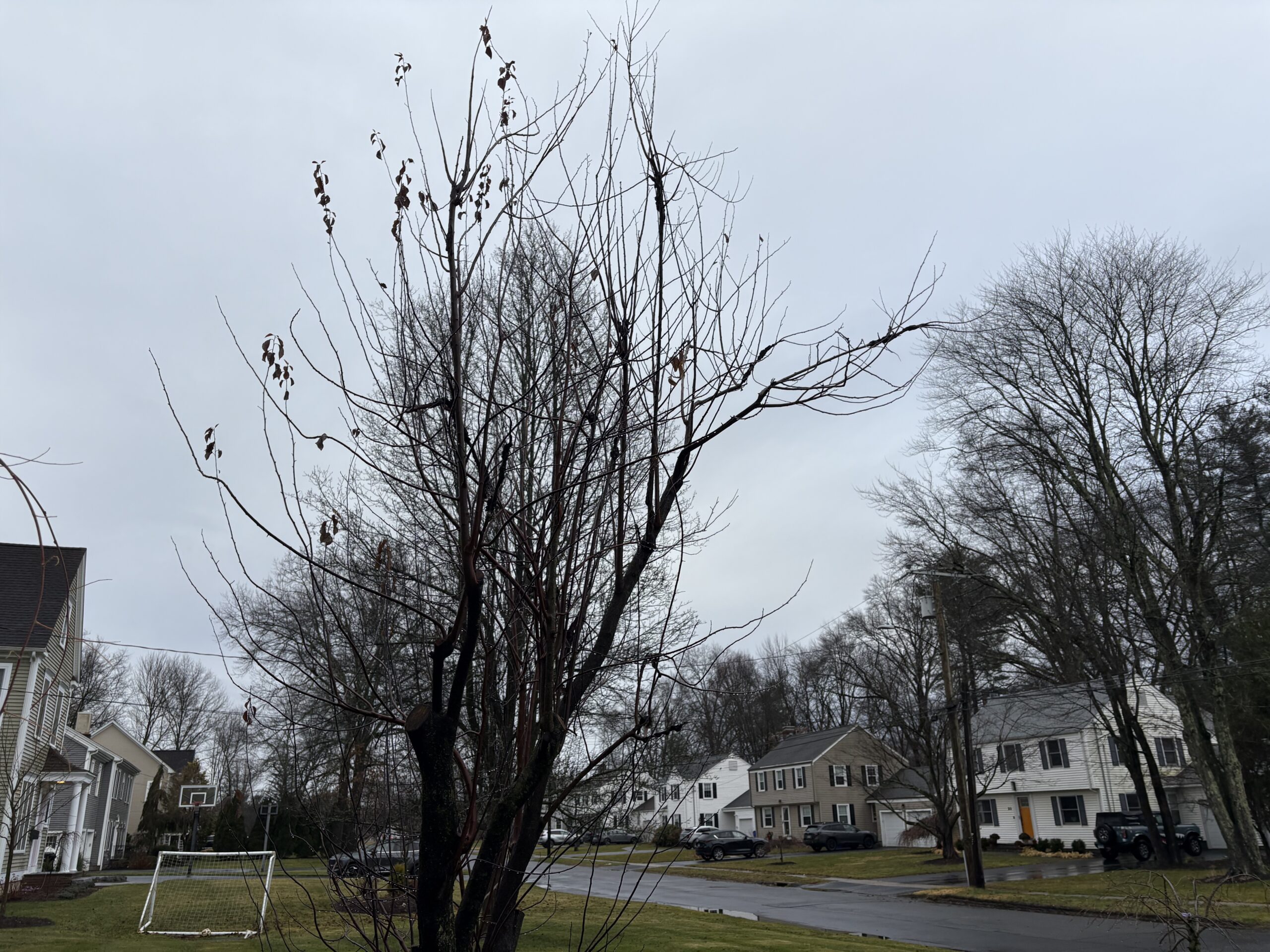From the West Hartford Archives: Fire Station #4, Albany Avenue

Audio By Carbonatix

Fire Station #4 in the 1950s. Photo courtesy of Noah Webster House & West Hartford Historical Society
Historian Jeff Murray takes a look into West Hartford’s past to uncover some surprising information, stir up some memories, or reflect on how much life has changed – or hasn’t changed at all. Enjoy this week’s ‘From West Hartford’s Archives’ …
By Jeff Murray
In the fall of 1954, a petition to the town for a special exception to zoning regulations was granted so that a firehouse could be built in a single-family residential neighborhood along Albany Avenue. This photograph was taken of the new firehouse in the 1950s.
The following spring, a new street was developed from the firehouse on Albany Avenue around the northeast corner of Bishop’s Corner to North Main Street. The Town Plan and Zoning Commission named it Starkel Road in honor of Henry A. Starkel, the West Hartford Police Department maintenance and equipment chief, who had died a week before.
The town owned the property on the west side of the road, which would become the Bishop’s Corner Library branch in the 1960s. The firehouse on Albany Avenue was long overdue, but it reflected the growing northern section of West Hartford. In the 19th century, the entire town was covered by the work of the Fountain Hose Company and other volunteers (there is more than one story in our history of a group of broom-wielding neighbors showing up to a barn or house fire, ready to go).
As the town grew in population, the risk of fire increased. But more importantly, the risk of clustered fires increased. It was not uncommon for single wooden houses to burn down in the 1800s, but as suburban streets were laid out and houses were densely constructed, the chance of massive outbreaks that could sweep through a street surged. In the summer of 1907, almost all of Raymond Road burned down while residents vacationed out of town.
Two years later, the first movement for a dedicated fire district sprang up on the East Side, where wealthy businessmen had built large estates on Prospect Avenue, Highland Street, Concord Street, Fern Street, and Farmington Avenue. Boundaries were laid out and the first district firehouse was built on Prospect Avenue in 1915 (it still stands there).
In 1914, the Center Fire District was organized, followed by the Quaker Hose Company off Park Road. After the Center Fire District took a vote to cut off all of Elmwood and Charter Oak, the South Fire District was established in 1919 during this bureaucratic wave of activity. That left the western and northern parts of West Hartford – but for a few more decades, residential development remained sparse.
These stretches of land were covered by the Fountain Hose Company generally and little by little, parts of North Quaker Lane and Fern Street by Main Street were annexed by the Center Fire District with an increase in the mill rate. In 1923, the north end of town met in the North School to petition for annexation to the fire district. By the end of the year, a vote was taken and the fire district approved annexation of the entire northern section to the Bloomfield line.
All of this extra work prompted the construction of a brand new firehouse on Brace Road in the Center, complete with a second floor assembly room, commissioner’s office, and crew quarters, as well as sliding poles. The district covered fire as well as garbage and ash collection by the late 1920s. The first half of the 1900s was very confusing for residents when it came to understanding the fire districts – in 1927, Captain Thomas Donnelly of the Center Fire District had to make a public statement urging residents to sit down and actually learn about the boundaries of each fire district, as too many people were calling the number of a district without authority on their street.
In 1937, the districts were merged under the umbrella of the West Hartford Fire Department. The growth of the Albany Avenue area required a new firehouse by the early 1950s, especially as King Philip Drive opened up. Roads that spanned the length of Trout Brook Drive needed to be covered as well. The construction of the huge shopping plaza at Bishop’s Corner in 1954 complemented all of this building activity, so it made sense to have a firehouse close by.
The land that the firehouse was built on had been known as the Mansfield farm. William Henry Mansfield had purchased this fruit farm, named “Mansfield’s Hill,” with his brother Peter. William served on the town school committee in the 1890s and was politically involved in the Republican Party, serving on the board of selectman through 1900. He and his brother enjoyed hunting and fishing trips to a lake in Maine, and his death in 1907 after a brief bout of pneumonia prompted his brother to sell the eastern half of the farm to a real estate company. This company laid out Grenhart Street, Tecumseh Road, Pontiac Road, Mohegan Drive, Bowen Street, and Mansfield Avenue.
Later, the western half of the parcel was sold and their farmhouse converted into a day and boarding school under the ownership of John G. Hawley. Hawley was an office manager of the Capewell Horseshoe Nail Company in Hartford before his retirement in 1921. During the next few years, he worked as a real estate agent and it was through this ownership that the Town of West Hartford acquired the land.
In 1956, a ladder company was moved from the Brace Road firehouse to the new firehouse on Albany Avenue, a decision made to beef up fire protection in the northern section of the town, where there were now larger buildings – houses, apartments, Bishop’s Corner commercial blocks, St. Mary’s Home, St. Agnes Home, and expanded quarters of Mt. St. Joseph Academy. The acting Town Manager Arthur Rutherford (former building inspector) argued: “Like the Police Department, changes are necessary to meet the heavy increase in population.”
These changes, notably the shifting of fire resources during the 1950s, were overseen by the West Hartford Fire Chief, Thomas Donnelly. Donnelly started his career with the department in 1920 as one of six firemen in the old Center Fire District. (He was also the one telling residents to learn about the fire districts because they kept calling the wrong one!). When the fire districts were consolidated in the spring of 1937, Donnelly was appointed chief of the entire force and oversaw innovations like water spray under high pressure (“fog”), firehouse kitchens, a fire department school, and a better furniture salvaging process. As a Navy veteran of World War I, serving at his hometown submarine base in New London, Donnelly worked intensely over decades to ensure a smooth organization of our fire department.
In May 1956, just after the ladder company was moved to Albany Avenue, Donnelly retired from the force. He died in 1961. Today, the Albany Avenue fire station is the second newest (after the one on Berkshire Road, built in the 1960s) and covers an area that grew much larger after its construction in the mid-1950s.

Fire Station #4. Google Street view
Jeff Murray was born and raised in West Hartford and has been involved with the Noah Webster House & West Hartford Historical Society since 2011 when he was a high school student and won the Meyer Prize for his essay on local history. Jeff routinely volunteers as local history researcher uncovering information for numerous museum programs such as the West Hartford House Tour and West Hartford Hauntings. Jeff works as a data analyst at Pratt & Whitney.
Like what you see here? Click here to subscribe to We-Ha’s newsletter so you’ll always be in the know about what’s happening in West Hartford! Click the blue button below to become a supporter of We-Ha.com and our efforts to continue producing quality journalism.




Hey Jeff- Don’t forget to check out the “Old” Station #4 which was on Bloofield avenue at the JCC. You can see the old brick building, and notice on the south side of the structure the old bay door openings. The Station personnel moved to the location in your story from this location….